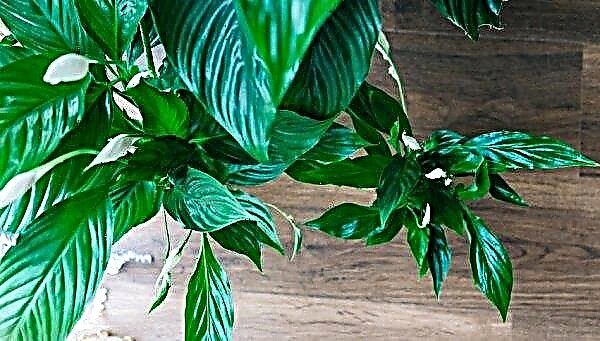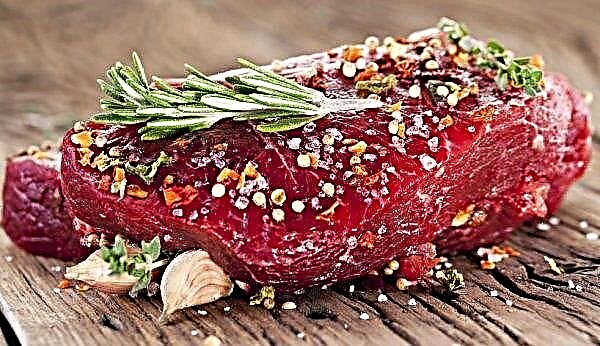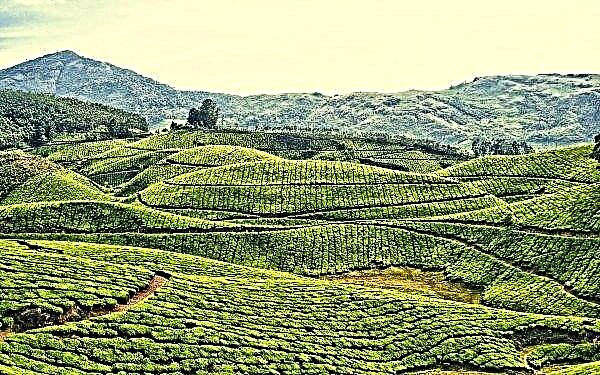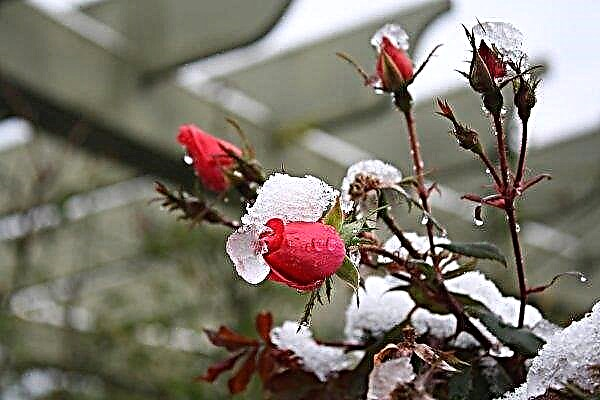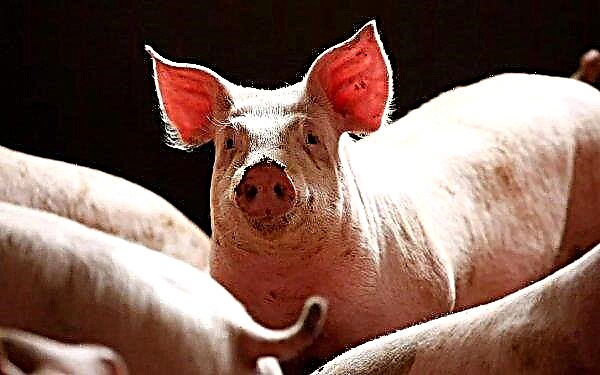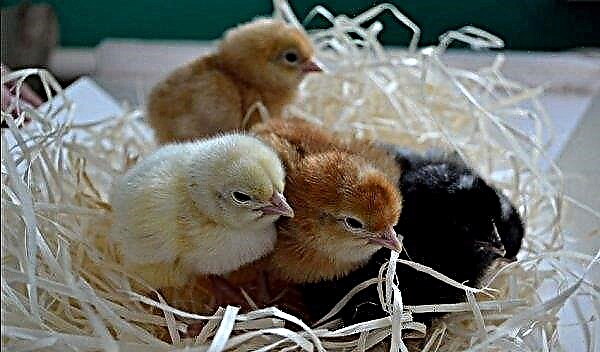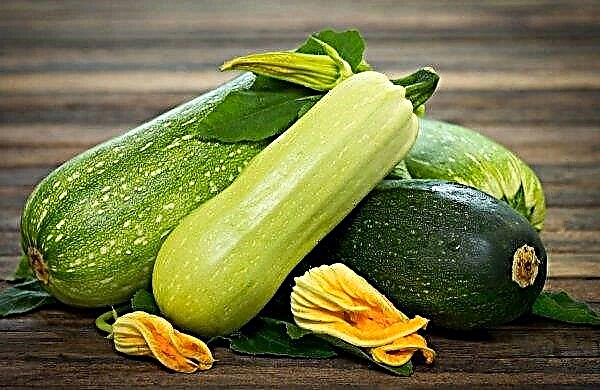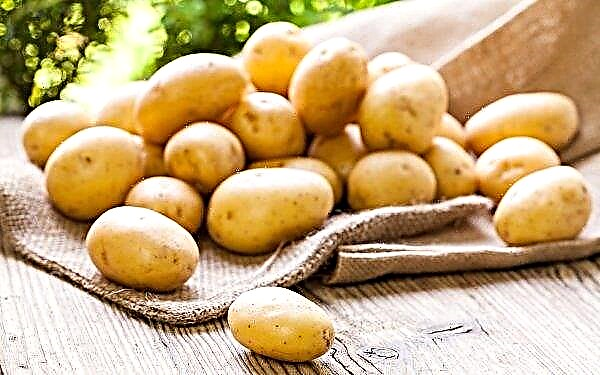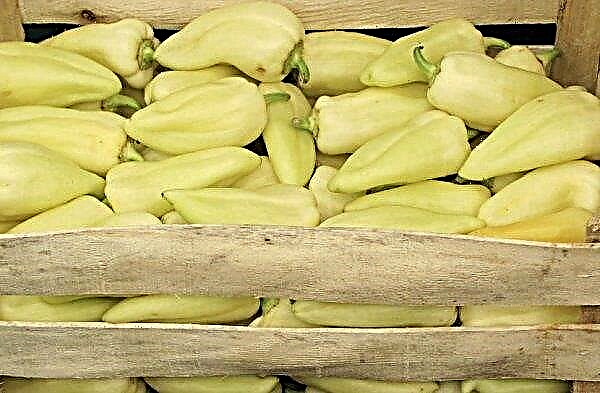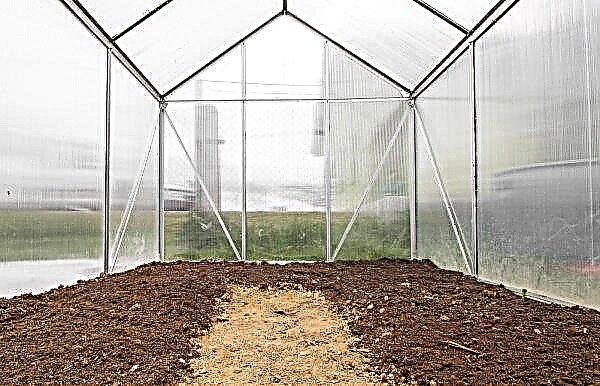The name of the cultivar “Linda” combines 2 types of tomatoes: Russian origin “cherry” and the result of the work of Japanese breeders - large fruits of the hybrid “f1”. Both species are very popular due to their taste characteristics and the absence of problems with cultivation. The article lists the main characteristics, focuses on the features of cultivation.
Grade description
The main characteristics of the tomato "Linda":
- The fruits ripen quickly.
- It tolerates a lack of light.
- Almost does not respond to temperature changes if the amplitude of its oscillations is small.
- The height of the cherry plant is up to 30 cm, and f1 is up to 80 cm.
- Strong stalk of the “cherry” type, not requiring a garter; the leaves are dark green, with “f1” large. The stems "f1" need a garter.
- Tomatoes grow heap, ripen in 55 days.
- Fruits from June to September. The first ovary on the "cherry" is noticeable after the appearance of 7 leaves. "F1" begins to bear fruit after 100 days from the appearance of sprouts.
- The weight of cherry tomatoes is about 35 g, “f1” is up to 300 g, color is saturated red, the shape is round, slightly flattened.
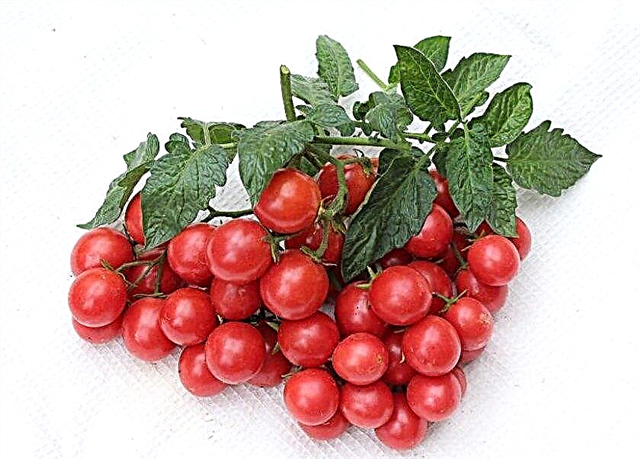
- The fruit tastes sweet with sourness, the pulp is dense, during transportation the fruits are not damaged.
- Productivity of the “cherry” species is up to 3 kg per 1 sq. Km. m, "f1" - up to 10.
- Resistant to disease.
- Cherry tomatoes are used to decorate dishes, salting, in salads; "F1" - for salads, juice, sauces, lecho.
- "Cherry" is grown in indoor conditions and on balconies, "f1" - in open areas and greenhouses.
- The “cherry” species can be grown on its own by collecting seeds from the crop and planting seedlings. To grow “f1”, you will need to buy seeds annually, since bushes grown from harvested seeds will not bear fruit.
- For 1 square. m plant up to 8 plants "cherry" and up to 4 - "f1".
| Linda F1 | |
| Breeder country | Japan |
| Productivity | Up to 10 kg per bush |
| Ripening time | 55 days |
| Weight | Up to 300 g each |
| Bush height | Up to 80 cm |
| Coloring | Red inside and out |
| The form | Rounded, slightly flattened |
| Pulp | Dense |
| Application | Salads, juice, sauces, lecho |

| Linda Cherry | |
| Breeder country | Russia |
| Productivity | Up to 3 kg per bush |
| Ripening time | 55 days |
| Weight | Up to 35 g |
| Bush height | Up to 30 cm |
| Coloring | Red inside and out |
| The form | Rounded |
| Pulp | Dense |
| Application | Decoration of dishes, salting and pickling, salad |

Advantages and disadvantages
- Advantages of tomato varieties "Linda":
- undemanding to leaving;
- disease resistance;
- can withstand temperature differences;
- large crop;
- early and long-term productivity;
- tasty fruits;
- good presentation of tomatoes;
- high landing density;
- the ability to preserve the presentation after transportation;
- can be preserved.
- Disadvantages:
- high cost of seeds "f1";
- the impossibility of growing a species of "cherry" on the beds.
Sowing seeds for seedlings
Seedlings for tomatoes can be purchased or grown independently, if you follow the rules of cultivation.

The timing
Choosing the date of sowing seeds for seedlings, you need to focus on when you plan to plant it in open ground, taking into account weather conditions in your region and the end of frost. Count back 55-65 days from this moment, and get the sowing date. The age of seedlings from emergence to planting should be at least 45 and no more than 60 days.
It is recommended to adhere to such terms of sowing a tomato of this type:
- South of Russia, Ukraine - February 20 - March 15.
- Center of Russia - 15.03 - 1.04.
- North of Russia - 1.04 - 15.04.
Important! If you plant seedlings in open ground ahead of schedule, it will be weak and may die. If you keep it at home for a long time, tomato growth will stop, which will worsen further productivity.
The soil
For cultivation, neutral, well-loosened soil with a rich in fertilizer content is suitable: for 3 kg of chernozem take 0.5 kg of organic fertilizer and add 7 g of saltpeter and superphosphate.
In order not to introduce pests and diseases with the soil, the soil must be decontaminated 1 of such methods:
- Fry in the oven at a temperature of + 200 ° C for about 15 minutes.
- Put in the microwave for 2 minutes, setting the power to 850 watts.
- Pour into a pot in which there are holes for drainage, and pour boiling water.
- Or pour potassium permanganate solution in this pot.
Capacity for growing
As a container for growing seedlings, you can use:
- wooden boxes;
- peat pots or tablets;
- paper or plastic cups;
- plastic cassettes;
- pre-cut plastic bottles or juice bags.

Seed preparation
Since the variety is resistant to disease, seed disinfection is not required.
Many gardeners pre-check the quality of seeds, evaluating their germination. For this, a small amount of planting material is selected, moistened, after about 7 days, the result is evaluated.
Soaking in a growth biostimulator will help increase germination. Soaked seeds are laid out on a flat surface and covered with a damp cloth for 3 days until the roots appear.
Although this variety is resistant to small temperature fluctuations, you can insure yourself and first put the seeds in a cold place.
Sowing seeds
The technology for sowing seeds of the “Linda” variety does not require special preparation:
- On the surface of the prepared moist soil lay the seeds in increments of 3 cm.
- Sprinkle on top with a layer of soil 1 cm thick.
- Cover with foil or glass.
- Take to a dark, warm place.
- Leave until sprouts appear.
- Daily control of soil moisture - swampy leave for a while to dry, moisten dry.
- After germination, remove the film and transfer to a bright place.
Seedling Care
To get quality seedlings, you must:
- Choose the right place. There should be no drafts, and the temperature should be in accordance with the standards.
- Ensure normal temperature. The sowing field of seedlings is kept at a temperature of + 25- + 30 ° C, then reduced by 5 ° C (+ 17 ° C is allowed at night).
- Provide a normal level of lighting. After sowing, the seedlings should be in the dark, and when sprouts appear, it will require a lot of light. A lamp is installed near it and thus increases the daylight hours to 16 hours.
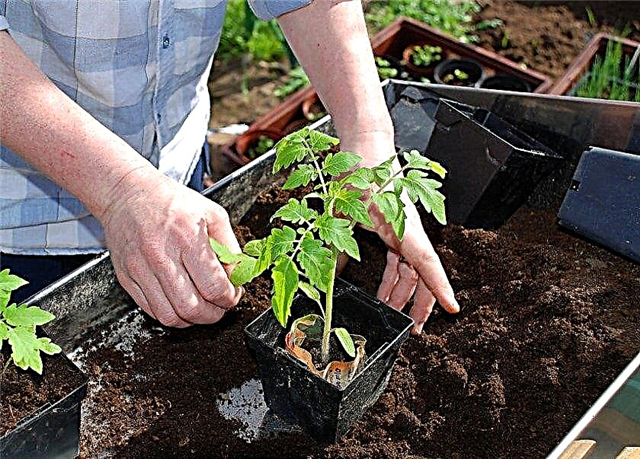
- Water correctly. Drying of the soil should not be allowed; swamping should also be excluded. When watering, weak sprouts can be damaged by water, so they water the ground under them. Some use a syringe or dropper. Water should be warm and settled. The grown seedlings are sprayed from the spray daily.
- Dive. Weekly seedlings with 2-3 leaves from the total are transplanted into a separate container of 0.2 l together with the soil in which it grew, so as not to damage the root system. After another 2 weeks, you need a half-liter or liter pot.
- Feed. 15-20 days after germination, weekly fertilizing with organic fertilizers begins. The dosage indicated on the package is divided in two.
Did you know? Doctor of Biological Sciences T.Yu. Ugarova in her book “Seedling. The use and development of the Mitlider method in Russia ”claims that providing round-the-clock coverage of seedlings in the first 3 days will improve its quality.
Seedling hardening
If the weather is warm and sunny, you can take the seedlings out onto the balcony daily or open the window for 5 minutes. In a cool climate, seedlings are tempered 15 days before planting in the ground, exposed to the balcony for 2 hours and increased the time of hardening daily by 3 hours. In this case, the temperature should not be less than + 10 ° C, and the plants are protected from direct sunlight. The sun should also be taught gradually. On the last day before planting, seedlings are not brought into the house or watered.

Planting seedlings in a permanent place
Seedlings are planted in a permanent place, which turned 45-60 days old. Usually a flower brush already appears on it. If for some reason it is impossible to transplant a tomato after the brush appears, it must be removed. The next time the brush appears after about 7 days.
Recommended planting dates for tomato "Linda":Important! Tomatoes that bloomed in pots stop growing.
- South of Russia, Ukraine - April 15 - May 20.
- Center of Russia - 10.05 - 1.06.
- North of Russia - May 25 - June 15.
Growing Features
Growing tomato "Linda", remember about watering, fertilizing, pinching, tying and the need for proper soil care.
Watering
During planting in the open ground, the well for the plant is watered, then a break is taken for a week to give the opportunity to take root and begin growth. Watering is carried out late in the evening under the root, without moistening the leaves so as not to get sick. The amount of water should be such that it slightly moistens the ground - before the appearance of the fruit, plants do not need excess moisture. It will be enough 1 time in 7-14 days.

When the ovary appears, they begin to water more often, while avoiding waterlogging. Try to keep the humidity level approximately the same, this will allow the fruits to grow better. You can use a drip type of irrigation (water is supplied in small portions through special dispensers).
Top dressing
Feeding plants is carried out 5 times:
- Before planting, fertilize the soil with compost and rotted manure.
- On the 21st day after planting seedlings. Use fertilizers containing potassium, nitrogen, phosphorus; you can dilute 1 tablespoon of wood ash in 0.5 liters of water, make a solution of bird droppings.
- When the flowers bloom on 2 flower ovaries. In specialized stores you can buy complex mineral fertilizers for tomatoes: Nitrofosco, Agricole Vegetu, Ideal, sodium humate, superphosphate, potassium sulfate, potassium chloride.
- When flowers appear on 3 flower brushes.
- 2 weeks after the previous one. Usually use superphosphate.
Video: Tomato transplant “Linda” to a permanent place
Stepson
Best tomato bush fruiting, if you leave 2 stems. It is not recommended to remove all stepsons at once, as the plant may weaken. It is best to do this gradually, making sure that they do not exceed a length of 4-5 cm. Usually, stepsons are left under the ovary of flowers and above it. First 1 stalk is formed, then the strongest stepson is added to it.
Soil care
To improve the growth of tomatoes, you need to properly care for the soil:
- Weed weedotherwise they will drown out the growth of the bushes and lead to depletion of the soil.
- To loosen the earth - Tomatoes of this variety love loose soil.
- Mulch - so that moisture from the earth evaporates more slowly. The ground between the rows is sprinkled with peat, straw, sawdust. You can sow green manure - plants that improve the composition of the soil (these include peas, soy, lentils, clover, alfalfa, mustard, rapeseed).
- Spud - sprinkle the root system with earth to enrich with oxygen, strengthen the roots and stem.
Bush tying
Tomato bushes are tied to:
- The stem did not break under the weight of the fruit.
- Provide access of the sun and air to all parts of the plant.
- Strengthen to protect from the weather.
- Facilitate care, watering, spraying.
- Protect the crop from slugs, mice, excess moisture near the ground.
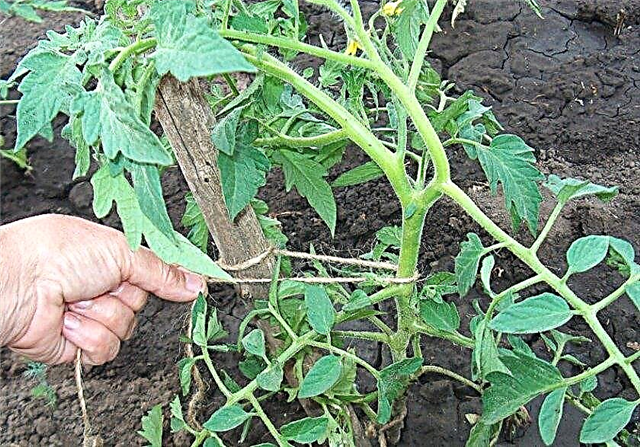
Garter methods:
- Stakes - wooden or metal. They are selected according to the growth of the bush, immersed in the ground to a depth of 25 cm, departing from the bush 10 cm. A string, rope or strip of synthetic fabric is tied around a peg, then loosely around the stem and tied.
- Tapestries - stakes drive along the edges of each bed and connect them with a metal wire. You can optionally put a few stakes along the beds. Stalks are tied to a wire.
- Cells - from dense wire or wooden slats make the same frames in the form of a circle or rectangle, which are connected by 4 vertical posts, having 1 on top, 1 in the center. The structure is installed around the bush and the stems are tied to it. In addition to the central cell, 4 bushes of tomatoes growing nearby (1 per each rack) can be attached to a wide cell.
- Caps - cages made of thinner wire or vines with tops tied together.
Did you know? In the list of plants related to vegetables, tomato is not listed. This is a berry.
Preventative treatment
The Linda variety is resistant to diseases, but can be affected by pests - whites, stalks, sawflies, Colorado potato beetles, aphids, thrips - or rot from excess moisture.
For the prevention of diseases it is necessary:
- Digging ground since autumn.
- Weed weed.
- Observe moderation in watering.
- Ventilate seedlings.
- Spray with Bordeaux fluid.
- Use for spraying once a week tincture of nettle, field horsetail, wood ash with the addition of a clove of garlic.
- Collect the larvae of the Colorado potato beetle.

Harvesting
Harvested in the morning in warm weather, dew drops on the fruit should dry. First, damaged and diseased tomatoes are taken. It is allowed to collect not only red, but also brown / green fruits; they are sent for ripening in a dark place, sorted by size. The main thing is to have time to harvest before the start of frost.
Ripe tomatoes are stored in crates, sprinkled with sawdust or layered with paper.Did you know? With frequent removal of ripe fruits, the ripening of the rest is accelerated.

Thus, tomatoes of the Linda variety, depending on the species, can be grown at home or in the beds. The fruits are tasty, ripen quickly, resistance to diseases is high, caring for them is no different from other species.




